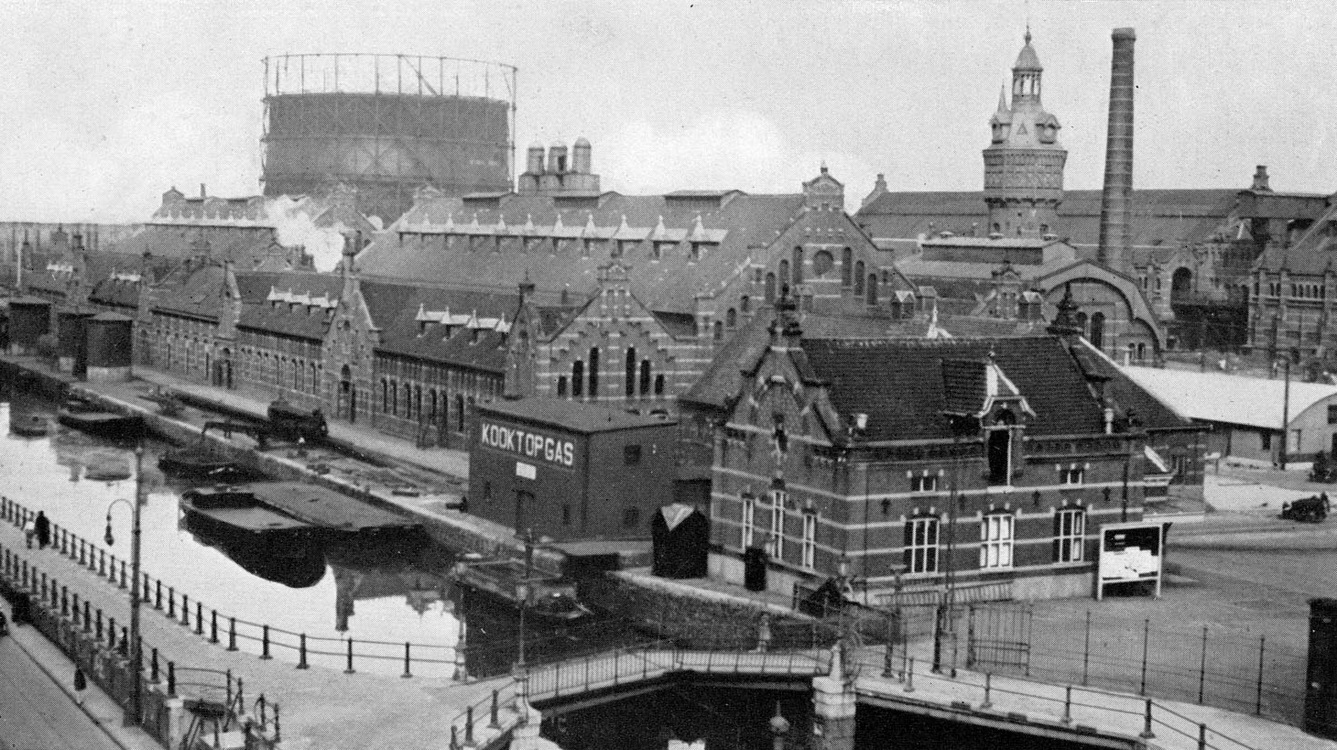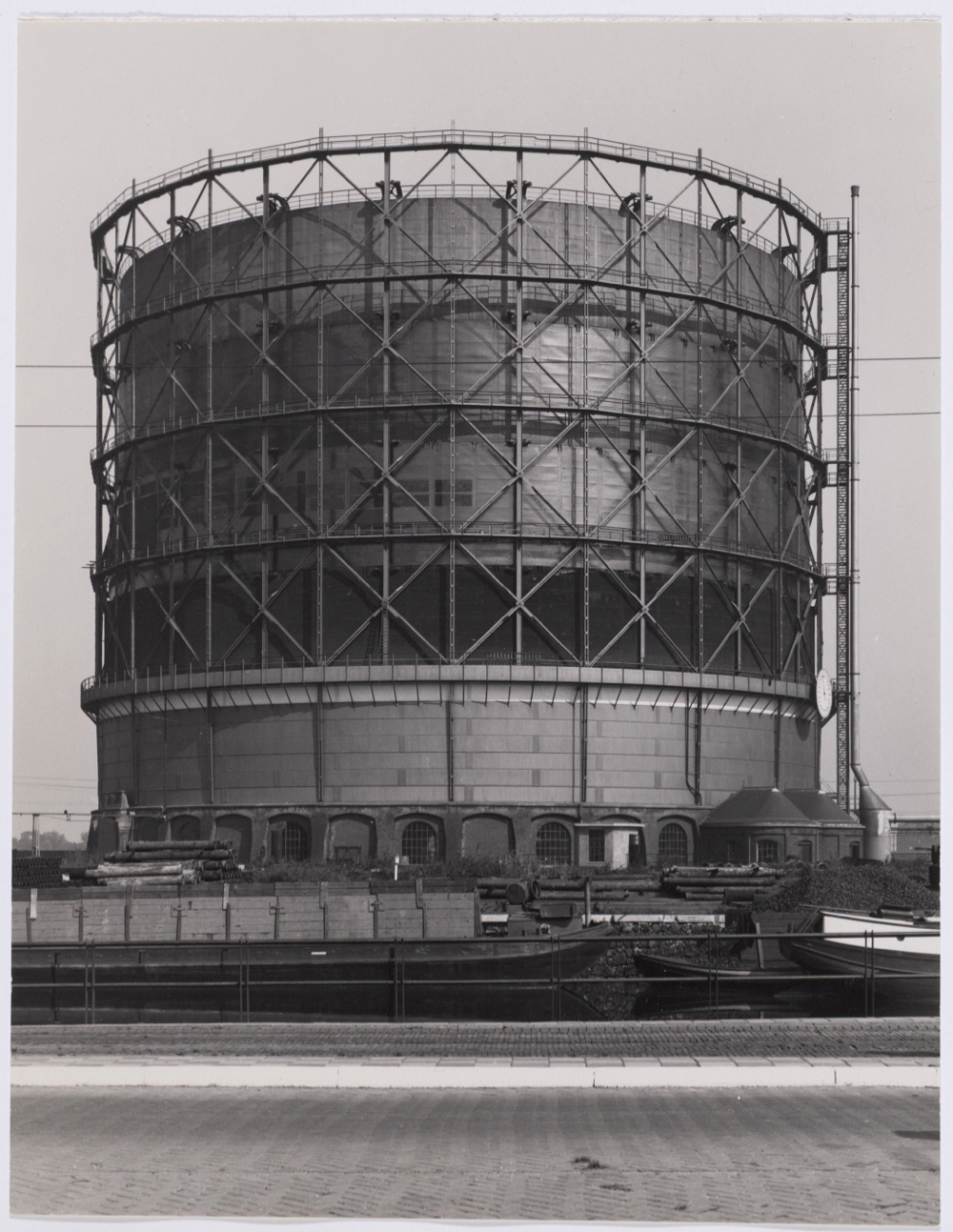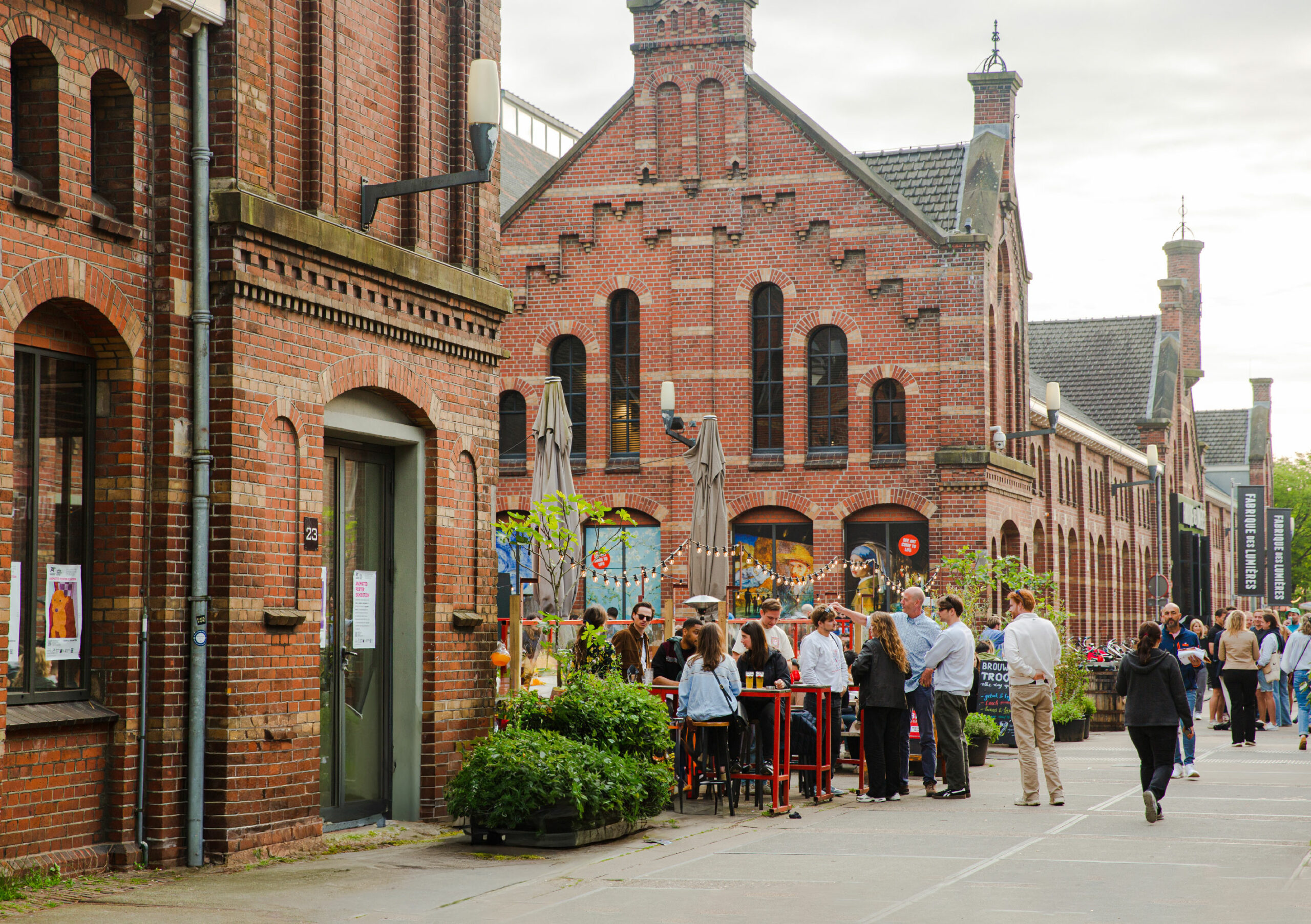The Westergas site has a rich history. The exterior of the 17 industrial buildings have never been changed drastically after the closure of the Westergasfabriek in 1967. Today, the factory buildings are used as a breeding ground for art and culture.

Originated in 1885
Prior to the advent of coal gas, people lit their homes with candles, grease or oil lamps. Heat was obtained from wood or peat. After the advent of coal gas, little by little, lighting in the Netherlands changed. Lighting the streets with coal gas was much cheaper compared to oil. For this, however, additional factories had to be built. Therefore, on July 23, 1883, Amsterdam gave the London Imperial Continental Gas Association the exclusive right to build two gas plants in Amsterdam. These became the Wester and Oostergasfabriek. The gas was initially used for city lighting (“city gas”/”light gas”) and later for private individuals and businesses.

Pazzani and Gosschalk
The London I.C.G.A. sent the Austrian Julius Pazzani (1841-1888) to Amsterdam to handle the technical planning of the manufacturing process and of the site. Pazzani successfully carried out all the difficult and delicate negotiations necessary to resupply a city of 400,000 inhabitants. Indeed, there was quite a bit of hostility from the old gas interests.
The design of the buildings came from Amsterdam architect Isaac Gosschalk (1838-1907). Gosschalk’s style soon became known as Hollandsche Neorenaissance. The buildings on the site were designed without too much excess in contrast to, for example, the Rijksmuseum, which opened in the same year (1885). Above all, the factories had to be suitable for what they were intended to do; house the machines. Gosschalk said the following about his style: ‘a building has style if it has character, if it expresses what it is, provided it does so in a beautiful way’.
Expansion and Closure 1898-1967
The Wester and Oostergasfabriek were taken over by the Municipality of Amsterdam on August 10, 1898. In the first years thereafter, production increased and major innovations and expansions occurred such as the construction of a 100,000m3 gas holder in 1903 at the Westergasfabriek. A watergas plant, later known as the transformatorhuis, was also built here in 1904. The great advantage of a watergas plant is that it can produce quickly in a short span of time. Especially during sudden cold spells in Amsterdam, this was a very nice feature.
In the 1960s, gas production declined as the municipality obtained the gas from the Hoogovens in IJmuiden. When the Slochteren natural gas bubble was discovered in 1963, production at the gas plants decreased rapidly. In 1967, gas production here ceased completely.
Cultural entrepreneurs and artist discover the site in 1992
After the closing, a heavily contaminated site was left behind. Years of gas production had taken its toll. A new destination proved a difficult task. There was pollution, but there also appeared to be special ecological conditions.
First, the Gemeentelijk Energie Bedrijf used the grounds as a storage and work site. All buildings that could not be used as storage were demolished. In the 1960s, industrial heritage was not yet valued. Starting in the early 1990s, when the G.E.B. permanently left the site, adventurous entrepreneurs and artists discovered the creative energy and endless possibilities of this unique location. More and more cultural activities came to life on the abandoned site. A new beginning, with culture as the driving force, the idea for today’s culture park was established during this time.
Redevelopment in 2003
As of 2003, the site is once again giving light and energy. The grounds were sanitized and a beautiful park was created. Creative entrepreneurs reside in the renovated, historic buildings and numerous events and festivals have settled there.
2018
The past brought us to where we are today but the present and the future are ours to determine. With sustainability, culture, entertainment and creativity at the forefront. In 2018, the Westergasfabriek buildings changed their names to Westergas. Same site, new energy: the Culture District of Amsterdam.
